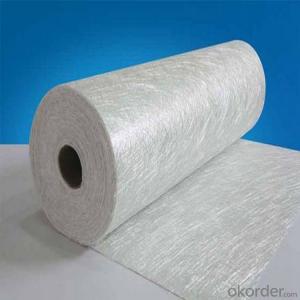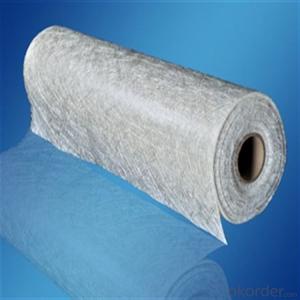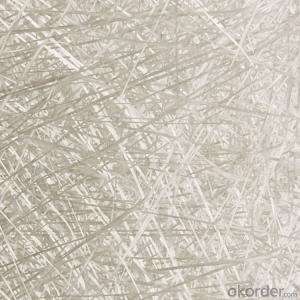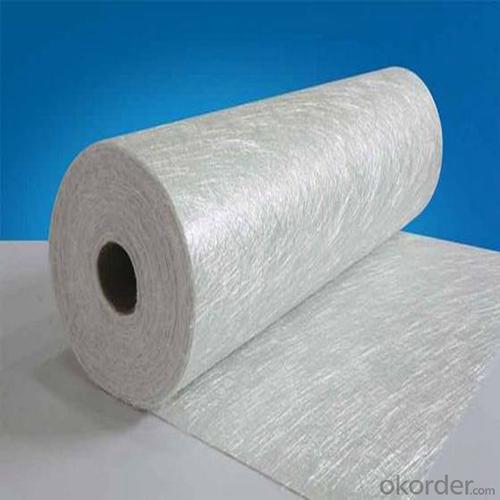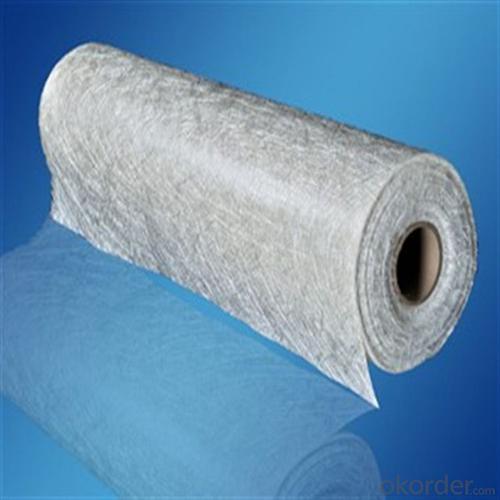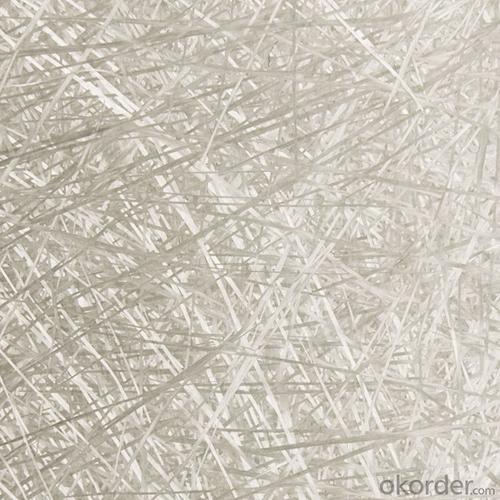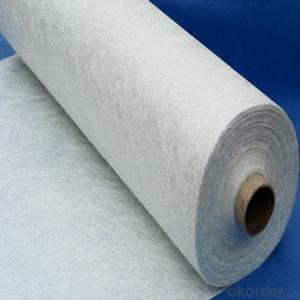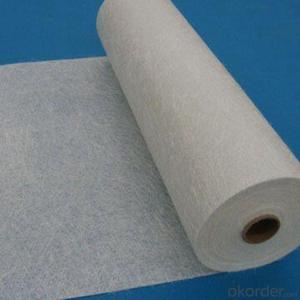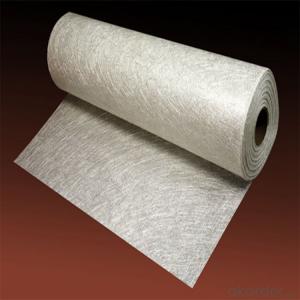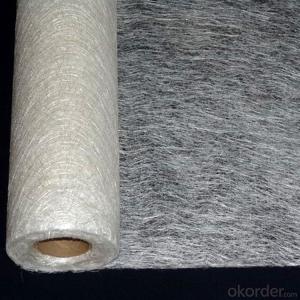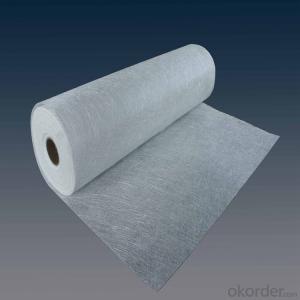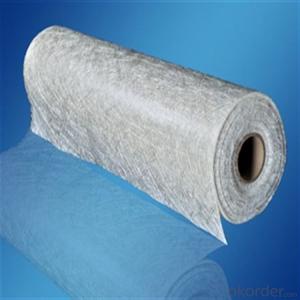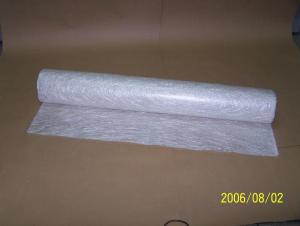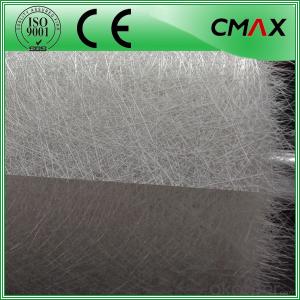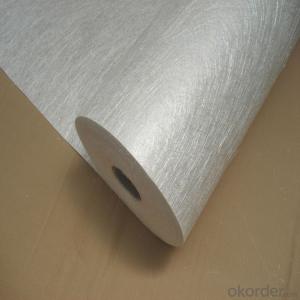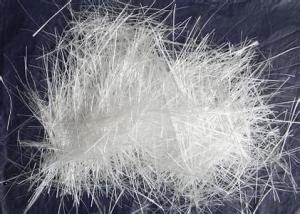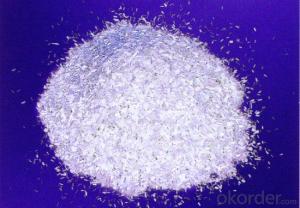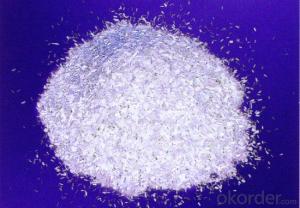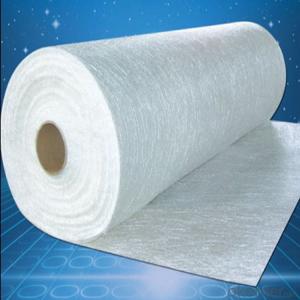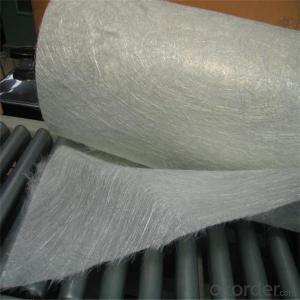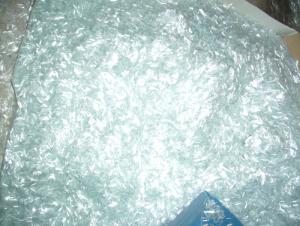Raw Materials Reinforced Fiberglass Chop Strand Mat, Glass Fiber Fabric
- Loading Port:
- China main port
- Payment Terms:
- TT OR LC
- Min Order Qty:
- 1 kg
- Supply Capability:
- 10000 kg/month
OKorder Service Pledge
OKorder Financial Service
You Might Also Like
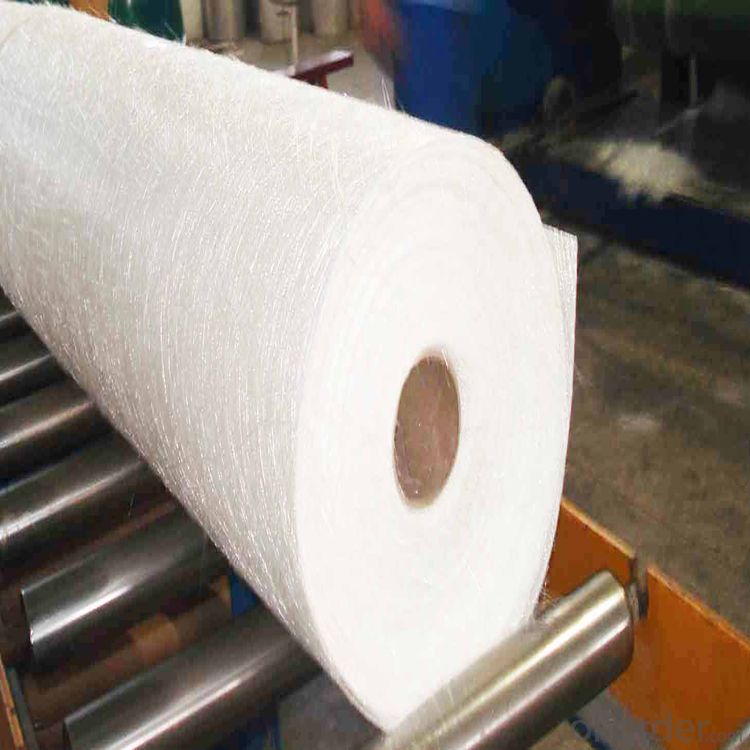
Product Description:
Fiberglass Chopped Strand Mat is fine strand reinforcement material made from E-glass cut fibers laid in a random pattern and bonded with powder or emulsion binder.
It is easy to handle and has excellent moulding performance.
Also, it has rapid resin penetration together with a fast strand wet out time.
The mat also brings a highly translucent finished laminates.
Also,the fine strand input makes the fiber prominence at the finished laminates surface extremely low.
Features
1.Excellent weight uniformity
2.Fast wet out
3.Easy air release
4.Excellent transparency of finished products
5.Excellent laminate
6.Low resin consumption
Application
1.Translucent roof panel
2.chemical storage tanks
3.FRP pipes
4.Boat hulls
5.Decks
6.Truck body panel
7.Cooling towers
8.Corrosion resistand
Specifications:
Item | Over Density | Moisture Content | Chop Density | Polyester Yarn | Width |
(g/m2) | (%) | (g/m2) | (g/m2) | (mm) | |
EMK300 | 309.5 | ≤0.15 | 300 | 9.5 | 50-3300 |
EMK380 | 399 | 380 | 19 | ||
EMK450 | 459.5 | 450 | 9.5 | ||
EMK450 | 469 | 450 | 19 | ||
EMC0020 | 620.9 | 601.9 | 19 | ||
EMC0030 | 909.5 | 900 | 9.5 |
Special products are available according to customer’s requirement.
Product Packaging:
Each Surface Tissue is wound onto a paper tube which has an inside diameter of 76mm and the mat roll has a diameter of 330mm. The mat roll is wrapped up with plastic film,and then packed in a cardboard box or wrapped up with kraft paper. The rolls can be vertically or horizontally placed. For transportation, the rolls can be loaded into a cantainer directly or on pallets.
Quantity
20'GP Container:About 10000kgs
40'HP Container:Aboout 23100kgs

Product Storage:
Unless otherwise specified, Chopped Strand Mat should be stored in a dry, cool and rain-proof area. It is recommended that the room temperature and humidity should be always maintained at 15℃~35℃ and 50%~75% respectively.
Company Information
CNBM (China National Building Material) Group is the largest comprehensive building materials group in China that in integrate scientific research, manufacturing and logistics into one entity. The largest building materials and equipment specialists in China. Upon State Council approval, today CNBM owned more than 300 subordinate manufacturing factories and servicing companies. There are 6 fully owned public listed companies and 11 partially owned with substantial shares public listed companies. In many of these fields, CNBM is playing the leading role in the building industry in the country.
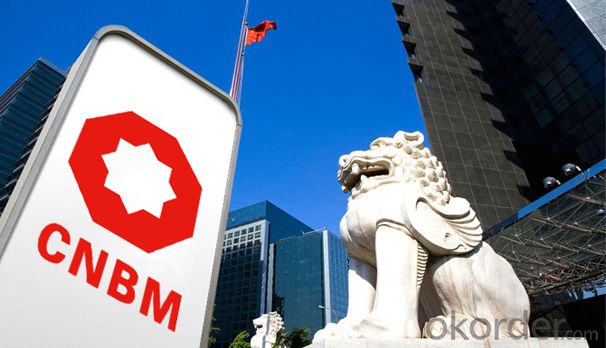
Our Service:
1.Any inquiry will be replied within 24 hours.
2.Professional manufacturer.
1) Print logo in the products;
2) The size and specification can be produce and design according to your demand.
3.High quality,fashion designs,reasonable and competitive price,fast lead time.
4.After-sale service
1) All products will have been strictly quality check in house before packing.
2) All products will be well packed before shipping.
3) All our products have 10 years rot resistance.
5.Faster delivery:sample order in stock,and 15-20 days for bulk production.
6.Payment:you can pay for the order via:T/T,Western Union,MoneyGram,L/C etc.
FAQ:
which kind of glass fiber sample and materials can you provide?
We can provide the glass fiber and glass fiber down stream products samples of E glass, C glass, ECR glass, High alkali glass. The products includes single end roving, assembled roving for different applications( Piping, SMC, panel, winding mill plate) , chop strand for BMC, engineering plastic (PA, PPA, PPT, POM, etc), chop strand mat (from 100gsm-900gsm) for automobile and water tank, etc, woven roving (270gsm-800gsm), surface tissue (25-50gsm), multi-axial fabric of different unit weight.
- Q: Is fiberglass chopped strand compatible with different post-processing techniques?
- Yes, fiberglass chopped strand is compatible with different post-processing techniques. Chopped strand mat (CSM) made from fiberglass is a versatile material that can be used in a variety of applications and post-processing techniques. It can be easily molded and shaped into different forms, making it suitable for processes such as compression molding, resin transfer molding (RTM), and hand lay-up. Fiberglass chopped strand is also compatible with post-processing techniques like vacuum infusion, filament winding, and pultrusion. These techniques involve impregnating the fiberglass with resin, which allows the material to be reinforced and strengthened. The compatibility of chopped strand with these techniques ensures that it can be effectively used in industries such as automotive, aerospace, construction, and marine. Furthermore, fiberglass chopped strand can be coated or laminated with different materials to enhance its properties. This allows for customization and optimization of the material for specific applications. Coating the chopped strand with resins, paints, or other protective layers can improve its resistance to chemicals, UV radiation, and moisture. Laminating it with other materials like carbon fiber or Kevlar can enhance its strength and stiffness. In summary, fiberglass chopped strand is highly compatible with various post-processing techniques, making it a versatile material with wide-ranging applications. Its compatibility allows for customization, optimization, and reinforcement, making it an ideal choice for industries requiring strong and durable materials.
- Q: Is fiberglass chopped strand suitable for insulation materials?
- Yes, fiberglass chopped strand is suitable for insulation materials. It is commonly used in fiberglass insulation products due to its excellent thermal properties and ability to trap air pockets, providing effective insulation against heat and cold. Additionally, fiberglass chopped strand is lightweight, non-combustible, and resistant to moisture, making it an ideal choice for insulation applications.
- Q: Can fiberglass chopped strand be used in corrosive environments?
- Fiberglass chopped strand can be used in certain corrosive environments, but it is important to consider the specific type of resin used in combination with the chopped strand. Fiberglass itself is resistant to many corrosive substances, including saltwater, mild acids, and bases. However, the resin used to bind the chopped strand together can vary in its resistance to corrosion. Epoxy resin, for example, is highly resistant to corrosion and can withstand exposure to a wide range of chemicals and corrosive environments. It is commonly used in applications where fiberglass chopped strand is required to resist corrosion, such as in the construction of chemical storage tanks, pipes, and other industrial equipment. On the other hand, polyester resin is less resistant to corrosion and may not be suitable for use in highly corrosive environments. It can be used in less harsh conditions, such as in the construction of swimming pools or automotive parts. In summary, fiberglass chopped strand can be used in corrosive environments depending on the specific resin used. It is crucial to select a resin that is compatible with the corrosive substances present in the environment to ensure the longevity and performance of the fiberglass material. Consulting with a materials engineer or a supplier specializing in fiberglass products can help determine the most suitable resin for a specific corrosive environment.
- Q: Does fiberglass chopped strand improve the sound insulation properties of composite materials?
- Composite materials can benefit from the inclusion of fiberglass chopped strand, as it has the ability to improve their sound insulation properties. Fiberglass, known for its exceptional acoustic characteristics, is frequently utilized in soundproofing applications due to its capacity to absorb and dampen sound waves. By incorporating fiberglass chopped strands into composite materials, their sound insulation capabilities are enhanced, resulting in reduced sound transmission through the material. The delicate fibers of fiberglass assist in dissipating and absorbing sound energy, leading to decreased noise transmission and improved sound insulation. Moreover, fiberglass chopped strand also enhances the structural integrity of composite materials, rendering them more efficient in the blocking and absorption of sound waves. All in all, the addition of fiberglass chopped strand to composite materials significantly augments their sound insulation properties, making them suitable for a wide range of applications, including automotive, aerospace, and building construction.
- Q: What are the safety precautions to be taken while handling fiberglass chopped strand?
- When handling fiberglass chopped strand, it is important to take several safety precautions. First, wearing appropriate personal protective equipment such as gloves, safety goggles, and a respirator is essential to prevent direct contact with the fibers and to avoid inhalation of any dust or particles. Additionally, it is recommended to work in a well-ventilated area to minimize the concentration of airborne fibers. When cutting or handling the material, sharp tools should be used carefully to prevent injuries. Lastly, it is crucial to follow proper disposal procedures for any waste or scraps to minimize environmental impact.
- Q: Is fiberglass chopped strand suitable for architectural applications?
- Yes, fiberglass chopped strand is suitable for architectural applications. It is a versatile material that offers excellent strength, durability, and flexibility, making it ideal for various architectural uses such as paneling, roofing, insulation, and decorative elements. Additionally, fiberglass chopped strand is lightweight, cost-effective, and resistant to corrosion, making it a popular choice in the construction industry.
- Q: Can fiberglass chopped strand be used for ballistic protection?
- To a certain extent, ballistic protection can be achieved using fiberglass chopped strand. Fiberglass is renowned for its impact resistance and high strength, making it suitable for applications like bulletproof vests, armored vehicles, and protective helmets. However, it is vital to acknowledge that fiberglass alone may not offer the same level of protection as specialized ballistic materials such as Kevlar or Dyneema. To enhance its strength and effectiveness for ballistic protection, fiberglass chopped strand is typically combined with other materials like resin or aramid fibers. This combination forms a composite material capable of efficiently absorbing and distributing the impact energy from ballistic threats. The effectiveness of the ballistic protection system depends significantly on its design and construction. Factors like the number of layers, fiber orientation, and overall thickness of the composite structure should be carefully considered to ensure optimal protection. While fiberglass chopped strand can provide a certain level of ballistic protection, it is crucial to consult experts in the field to determine the most suitable materials and design for specific ballistic protection requirements.
- Q: Is fiberglass chopped strand compatible with unsaturated polyester resin?
- Indeed, unsaturated polyester resin is compatible with fiberglass chopped strand. Commonly utilized as reinforcement in composite materials, fiberglass chopped strand finds its place as a reliable source of strength. Equally common as a matrix material for composites, unsaturated polyester resin blends harmoniously with the chopped strand, granting durability to the resulting composite material. The compatibility between these two components guarantees excellent adhesion and bonding, facilitating efficient manufacturing and ensuring the reliability of composite products.
- Q: How is fiberglass chopped strand typically packaged and shipped?
- Fiberglass chopped strand is packaged and shipped in various forms to cater to different applications and customer needs. Bags, boxes, and pallets are the most common packaging options available. In the case of bag packaging, a durable plastic bag is used to store the chopped strand, ensuring that moisture and contaminants are kept out. These bags come in different sizes and weights, ranging from small individual bags to large bulk bags capable of holding several hundred kilograms. Bag packaging is convenient for smaller quantities and guarantees easy handling and storage. For larger quantities or industrial uses, chopped strand is often packed in boxes. These boxes, made from sturdy cardboard or wood, offer additional protection during transportation and storage. The chopped strand is neatly stacked inside the boxes to facilitate easy handling and minimize potential damage. In certain instances, especially when shipping larger volumes, chopped strand is packed on pallets. This method allows for efficient transportation and effortless loading and unloading using forklifts or other handling equipment. The chopped strand is typically tightly packed and secured on the pallet using plastic or stretch film to prevent any movement or damage while in transit. Regardless of the chosen packaging option, fiberglass chopped strand is typically transported using standard methods such as trucks, rail, or sea freight. Great care is taken during the loading and unloading processes to ensure the packaged material remains intact and undamaged.
- Q: What are the common failure modes of fiberglass chopped strand composites?
- Fiberglass chopped strand composites exhibit several failure modes that are commonly observed. Delamination is a prominent failure mode, characterized by the separation or detachment of the composite layers from each other. This can be attributed to inadequate bonding during manufacturing or excessive external forces applied. Another failure mode is fiber breakage, which occurs when individual glass fibers fracture under stress. This can happen if the fibers are not aligned correctly or if they have defects or weak spots. The strength and load-bearing capacity of the composite are significantly compromised by fiber breakage. Matrix cracking is another failure mode that manifests as small cracks or fractures in the resin matrix holding the fibers together. Excessive stress, temperature fluctuations, or improper resin distribution during manufacturing can cause matrix cracking. These cracks undermine the integrity of the composite, leading to further damage. Fiber pullout is a common failure mode where the fibers partially or completely detach from the resin matrix. Weak bonding or excessive external forces can trigger fiber pullout, resulting in reduced stiffness and load-bearing capacity. Lastly, environmental degradation affects fiberglass chopped strand composites over time. Exposure to harsh conditions like UV radiation, moisture, and extreme temperatures causes the resin matrix to degrade and weaken. Chemical exposure also contributes to the degradation and loss of mechanical properties in the composite. Understanding these common failure modes is essential for designing and manufacturing fiberglass chopped strand composites that deliver optimal performance and durability.
Send your message to us
Raw Materials Reinforced Fiberglass Chop Strand Mat, Glass Fiber Fabric
- Loading Port:
- China main port
- Payment Terms:
- TT OR LC
- Min Order Qty:
- 1 kg
- Supply Capability:
- 10000 kg/month
OKorder Service Pledge
OKorder Financial Service
Similar products
Hot products
Hot Searches
Related keywords
